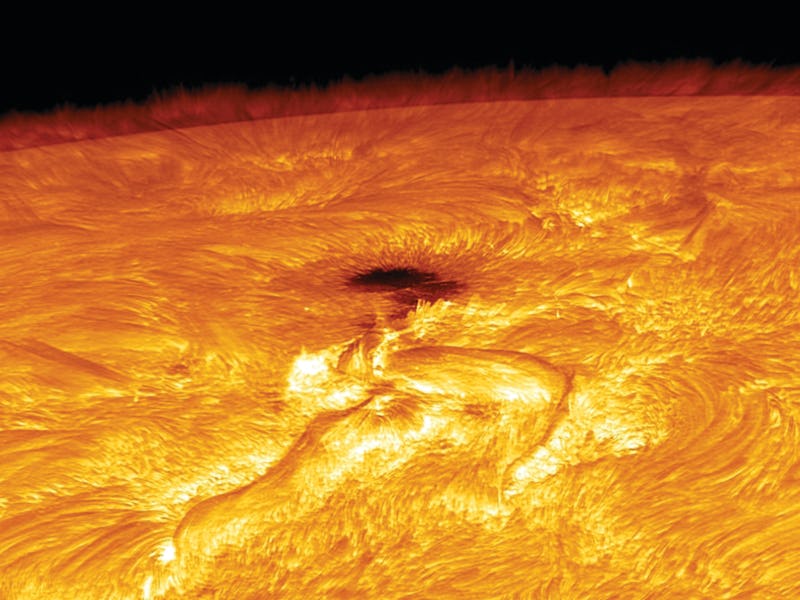NASA video captures a fiery ripple across the surface of the Sun
The sun sent out a glorious sight this weekend — and NASA caught it in action.

Our Sun is a temperamental star, often erupting in major outbursts of boiling hot plasma. And sometimes, we're able to catch those flare ups in action.
On February 27, NASA satellites spotted a major flare up erupting from the Sun. The Solar and Heliospheric Observatory (SOHO) captured a coronal mass ejection (CME) from the Sun’s northwestern limb. If they were to reach Earth, these types of solar flare ups can wreak havoc on our electricity grid. Thankfully, this one was not aimed in our planet’s direction.
SOHO has been observing our host star for the past 25 years, taking note of its every move. It orbits than Sun around 932,000 miles closer to it than the Earth, getting a more intimate view of our home star.
What happened: The eruption came from an area that stretched around 250,000 miles across the Sun. The flare up was classified as a C2, which means that it was not powerful enough to cause any damage to us down here on Earth, according to Space Weather.
SOHO captured this recent solar flare erupting from the Sun, seen as a smoky wave rippling across the Sun's surface.
Coronal mass ejections are highly energetic eruptions from the Sun and the main source of major space weather events. They're composed of giant bubbles of gas and magnetic field released from the Sun with up to a billion tons of charged particles, traveling at high speeds that can reach several million miles per hour. The Sun periodically ejects this boiling-hot plasma, flinging ionized material and radiation outwards into outer space, with our planets sometimes in the path.
The amount of solar activity largely depends on the Sun's magnetic field. The Sun’s magnetic field goes through a periodic cycle in which the south and north poles switch spots, and it takes another 11 years or so for them to switch back.
This 11 years is called a solar cycle, the onset marked by periods of violent eruptions and magnetic explosions that send flashes of radiation into space. We are currently experiencing Solar Cycle 25. This is the 25th cycle, with the numbering of cycles beginning in 1755.
How does it affect us?: The Sun’s activity begins to intensify halfway through the cycle, which leads to an uptick in CMEs.
These ejections can sometimes cause magnetic storms in the Earth's upper atmosphere when they penetrate through Earth’s protective layer of atmosphere, known as the magnetosphere, which can have major effects on the power grids on Earth, as well as orbiting spacecraft and astronauts.
The same magnetic storms can often cause high-latitude auroras, the same as the Northern Lights.
Future flares: One of the last geomagnetic storm that had large-scale impacts on Earth was on August 7, 1972, when a massive solar flare up erupted from the Sun's surface, disrupting radio waves, telecommunication networks, and power systems by triggering an intense magnetic storm. A March 1989 event also wreaked havoc on electrical grids in Canada.
However, the latest coronal mass ejection recorded resulted from a C2-class solar flare, which is rather weak relative to explosive flares. Additionally, the latest CME erupted from the Sun's northwestern limb, which means that it is not headed towards Earth's direction.
But NASA does keep a close eye on our Sun with satellites such as SOHO in case it decides to flare up in our direction.
This article was originally published on